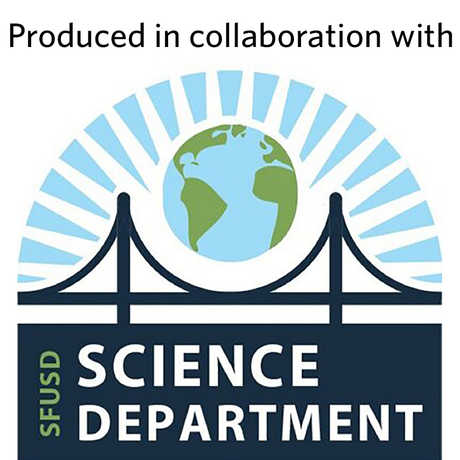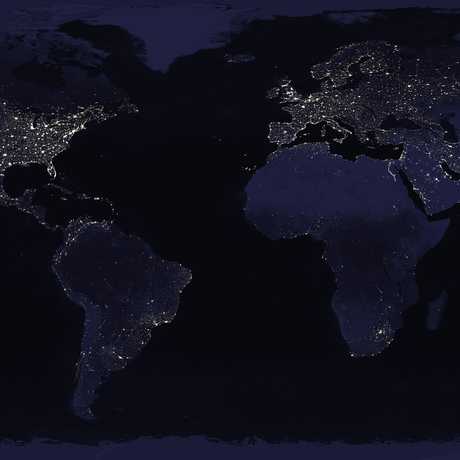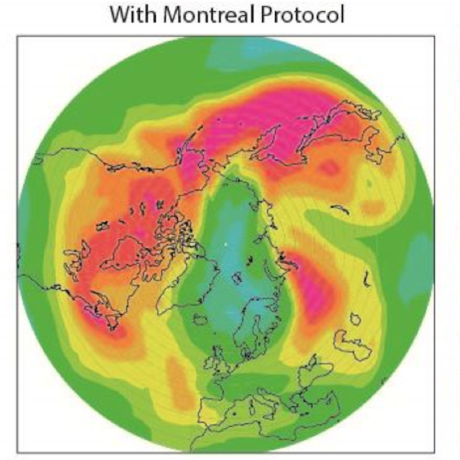
Ozone in the stratosphere acts like a shield, protecting us from much of the sun's harmful ultraviolet radiation. But decades ago, manmade chemicals began to weaken this shield...
About This Video
Grade level: 6-12
Length: 5 minutes
Next Generation Science Standards: HS-PS1.B, HS-ETS1.A
Video Synopsis
Ozone (O3) is an important gas in Earth's atmosphere that is a pollutant in the troposphere, where we live, but is a protector in the stratosphere over 10 km up. Stratospheric ozone protects us from much of the Sun's harmful ultraviolet radiation by interacting with UV rays in a series of chemical reactions that are constantly breaking ozone apart and reforming it. While this system of reactions is naturally in balance, manmade gases called chlorofluorocarbons (CFCs) that were used in refrigerators, air conditioners, and aerosol sprays act as catalysts in the destruction of ozone. In 1987, the Montreal Protocol banned the use of CFCs after is was discovered that the ozone layer over Antarctica had thinned to dangerous levels. Since 1993, CFC levels in the atmosphere have decreased and the ozone layer is making a comeback.
This video was produced in collaboration with the San Francisco Unified School District as a part of their NGSS-aligned high school chemistry curriculum.
NASA Ozone Watch
What's going on with the ozone hole? View the latest status of the ozone layer over the Antarctic, with a focus on the ozone hole. Look at false-color maps of ozone concentrations or download data from yesterday or decades ago.
Image credit: NASA
Interactive Simulation: Molecules and Light
Using this interactive simulation from PhET, students can observe how different molecules react to different light sources. How does ozone react to ultraviolet light? 'Shoot' photons of UV light at an O3 molecule to find out!
Learning Module: Ozone Depletion
Looking for lessons and assessments about ozone and the ozone layer? This learning module from San Jose State University's Department of Meteorology and Climate Science features teaching and learning materials for four lessons about ozone and ozone depletion. Students will explore the basics of the ozone layer, the history of the ozone hole, and what will happen to the ozone layer in the future.
Connections to the Next Generation Science Standards
While this video doesn't necessarily cover the following standards in depth, it is a compelling resource you can use to supplement your curriculum that does.
Disciplinary Core Ideas
- HS-PS1.B Chemical Reactions: Chemical processes, their rates, and whether or not energy is stored or released can be understood in terms of the collisions of molecules and the rearrangements of atoms into new molecules, with consequent changes in the sum of all bond energies in the set of molecules that are matched by changes in kinetic energy. In many situations, a dynamic and condition-dependent balance between a reaction and the reverse reaction determines the numbers of all types of molecules present.
- HS-ETS1.A Defining and Delimiting Engineering Problems: Humanity faces major global challenges today, such as the need for supplies of clean water and food or for energy sources that minimize pollution, which can be addressed through engineering. These global challenges also may have manifestations in local communities.
Share This






